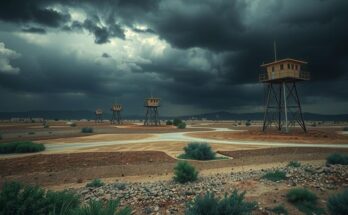A recent discovery of 744 letters from Japanese students reveals gratitude for U.S. aid after the 1923 Great Kanto Earthquake. President Calvin Coolidge organized a rapid response, providing $10.6 million in aid. The letters illustrate the significance of diplomacy during challenging times and highlight the role of community in fostering international relations.
Recently, researchers from Tohoku University uncovered 744 letters from Japanese students expressing gratitude for U.S. aid following the 1923 Great Kanto Earthquake. The team endeavored to find descendants of these students to understand the circumstances under which the letters were sent to America. The discovery highlights the significance of bilateral relations post-disaster, despite existing tensions.
In the immediate aftermath of the earthquake, then-U.S. President Calvin Coolidge acted swiftly. On September 1, 1923, he communicated his sympathy to Emperor Taisho and mobilized relief efforts through the U.S. Navy’s Asiatic Fleet. Followed by a nationwide appeal for donations, the U.S. contributed humanitarian aid amounting to $10.6 million in today’s currency, including critical supplies such as beds and food.
The Japanese students’ letters, previously unaccounted for, were organized through a call by the Japan Students Association. The initiative drew participation from numerous students across Japan, demonstrating a collective spirit. One letter poignantly expressed a hope for enduring friendships and a commitment to world peace.
At the time, anti-Japanese sentiment was growing in the United States, which suggests that post-disaster aid could serve as a form of diplomatic strategy. Professor Atsushi Kawauchi theorizes that the Japanese government encouraged students to write these letters to foster goodwill between the nations.
Ken Yoshino, a member of the investigation group, emphasized the importance of learning from these interactions to promote future international disaster preparedness and peaceful relations. Details of the findings will be shared at the World Bosai Forum 2025 in Sendai, with an appeal for information about the letters being made to the public.
The uncovering of 744 letters from Japanese students underscores the deep appreciation for U.S. humanitarian efforts following the 1923 earthquake. President Coolidge’s prompt action facilitated significant aid, fostering goodwill during a challenging period. This historical exchange highlights the potential for disaster diplomacy to enhance international relationships, a lesson that resonates in contemporary global interactions. The investigation into these letters aims to strengthen ties and promote future cooperation in disaster prevention.
Original Source: japannews.yomiuri.co.jp




